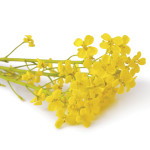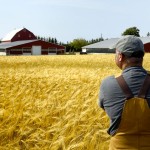
Tag Archives University of Manitoba

Those critters are farming your soil
Soil Health: Healthy soil includes a healthy, complicated, diverse mix of bacteria and fungi

Training the next generation of plant breeders
U of M students get hands-on experience developing herbicide-tolerant rapeseed hybrids

The Canola 100 challenge is achievable

Producer group promotes barley
MWBGA is putting its research dollars into fusarium head blight resistance

Soil: Test the right pound of ground
If you don’t measure what you have, you can’t know what to add. Know the basics of taking soil tests

Resisting fusarium head blight
Plant breeders are making progress in developing wheat varieties that are resistant, but it’s a marathon, not a sprint

Copper applications have limited impact on wheat
Researchers say non-targeted copper application does not increase macronutrients

Making money growing sunflowers
Sunflowers can be very profitable in some parts of the Prairies. If you can manage sclerotinia

Ten things to know about grain contracts
Cheryl Mayer explains 10 steps to better understanding and profiting from your grain contracts

Building new farm leadership
Farmers need a strong voice, but getting new farmers into leadership roles is easier said than done


